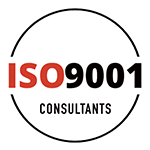Understanding ISO 9001 standards can significantly improve your business’s operations. These standards set the criteria for a quality management system and are recognised worldwide. By implementing ISO 9001, you can ensure that your products and services consistently meet customer and regulatory requirements.
With a solid understanding of ISO 9001, you can take meaningful steps to enhance your quality management system and drive your business forward.
Overview of ISO 9001 Standards
ISO 9001 is an international standard that sets out the criteria for a quality management system (QMS). Organisations use it to ensure that they meet the needs of customers and other stakeholders while meeting statutory and regulatory requirements. The standard was developed and published by the International Organisation for Standardisation (ISO).
The ISO 9001 standard is based on several quality management principles, including a strong customer focus, the motivation and implication of top management, the process approach, and continual improvement. These principles help businesses efficiently manage their operations to ensure customer satisfaction and continual progress.
ISO 9001 applies to any organisation, regardless of size or industry. By implementing ISO 9001, businesses can improve their product and service quality, enhance customer satisfaction, and streamline their processes. It provides a strategic and flexible management system that helps companies to achieve sustainable growth and continuous improvement.
Key Principles of ISO 9001
ISO 9001 is built on seven quality management principles that guide the implementation and operation of a quality management system:
1. Customer Focus: Understanding and meeting customer needs is crucial. Everything from obtaining and increasing customer satisfaction to enhancing customer loyalty and maintaining consistent quality is covered under this principle.
2. Leadership: Effective leadership establishes unity of purpose and direction. Leaders create an environment that encourages involvement and fosters a commitment to quality at all levels of the organisation.
3. Engagement of People: Employee involvement is vital. Recognising, empowering, and improving employees’ capabilities at all levels fosters a culture where everyone is committed to the organisation’s quality objectives.
4. Process Approach: Managing activities and resources as processes helps achieve more efficient results. A process-oriented approach emphasises management’s attention on critical processes and their interrelations.
5. Improvement: A continual improvement mindset helps an organisation remain competitive. Continuous efforts to enhance products, services, and processes drive long-term success.
6. Evidence-Based Decision Making: Decisions based on the analysis of data and information are more effective. This principle relies on facts, figures, and data to guide decision-making.
7. Relationship Management: An organisation’s ability to create and maintain relationships with interested parties, such as suppliers, can directly impact its performance. Managing these relationships ensures mutual benefits and sustained success.
Understanding and applying these principles allows businesses to operate more strategically and effectively respond to quality management challenges. This structured approach also helps companies to meet the ISO 9001 requirements more quickly and efficiently.
Steps to Achieve ISO 9001 Certification
Achieving ISO 9001 certification involves several key steps. The process may seem complex, but breaking it down into manageable phases can make it easier:
1. Preparation and Planning: Start by understanding the ISO 9001 requirements and how they apply to your business. Conduct a gap analysis to compare your current processes with ISO 9001 standards. Identify areas that need improvement and create a plan to address them.
2. Employee Training and Engagement: Inform and train your employees on the importance of ISO 9001 standards. Their active participation is crucial for a successful implementation. Make sure everyone knows their roles and responsibilities.
3. Implementing the Quality Management System (QMS): Begin implementing the changes identified in your gap analysis. This may involve updating processes, documenting procedures, and establishing new workflows that comply with ISO 9001 standards.
4. Internal Audits: Conduct internal audits to ensure the QMS works effectively. These audits help you identify any issues before the formal certification audit. Use the findings to make further improvements.
5. Certification Audit: Once you feel confident in your QMS, schedule a certification audit with a third-party certification body. The auditor will assess your system to ensure it meets ISO 9001 standards. If successful, you will receive your ISO 9001 certification.
6. Continual Improvement: Maintaining certification is an ongoing process. Regularly review and update your QMS to ensure it continues to meet the standard and improves over time.
Benefits of ISO 9001 for Your Business
Achieving ISO 9001 certification comes with numerous benefits that can positively impact your business:
– Improved Efficiency: ISO 9001 helps streamline processes, reducing waste and increasing efficiency. Standardised procedures mean less confusion and fewer errors.
– Enhanced Customer Satisfaction: By focusing on quality management, you can consistently meet customer needs and expectations, leading to higher customer satisfaction and loyalty.
– Market Recognition: ISO 9001 is recognised globally. This certification can enhance your reputation and give you a competitive edge in local and international markets.
– Employee Engagement: A well-implemented QMS clearly outlines employees’ expectations. This clarity can improve morale and increase employee engagement and productivity.
– Better Decision Making: Data-driven decisions are a core principle of ISO 9001. Using real data to guide choices helps make informed decisions that benefit the business.
– Compliance and Risk Management: ISO 9001 ensures you meet regulatory requirements. It also helps identify and mitigate risks, making your business more resilient.
Conclusion
Understanding and implementing ISO 9001 standards can significantly enhance your business operations and reputation. This standard provides a structured approach to managing quality, ensuring that your products and services consistently meet customer and regulatory requirements. The benefits are substantial, from improving efficiency to increasing customer satisfaction and gaining global recognition.
If you’re ready to take the next step towards improving your quality management system, ISO 9001 Consultants can help. Our experienced team will guide you through the entire process, from understanding the ISO 9001 standards to achieving certification. Contact ISO 9001 Consultants today to begin your journey towards ISO 9001 accreditation and watch your business thrive.







